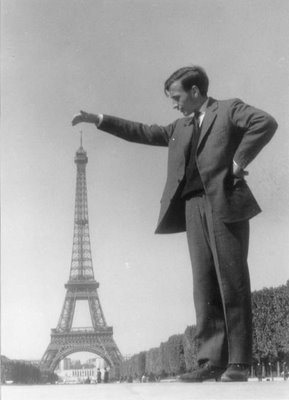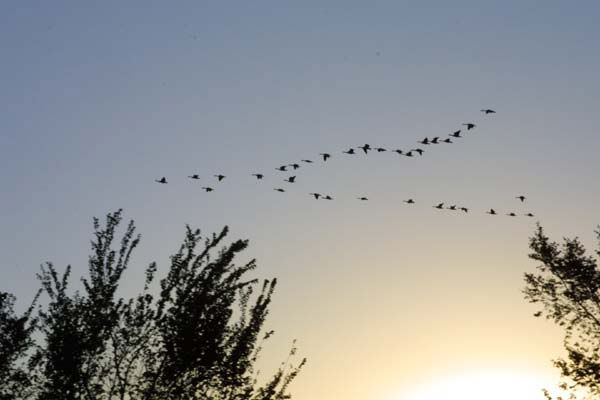Shape constancy is the phenomenon of perceiving real shapes of objects regardless of their retinal projections. In this door photo, we perceive that all of these doors are rectangular even though that is not the shape of the angled doors that our retinas are receiving.
Tuesday, November 5, 2013
Brightness Constancy
Brightness Constancy refers to the tendency for a visual object to be perceived as having the same brightness under widely different conditions of illumination. In this picture, we perceive that all of the leaves have the same brightness even though there are different degrees of light on each leaf.
Size Constancy
Size constancy refers to the fact that our perception of the size of objects are relatively constant despite the fact that the size of objects on the retina vary greatly with distance. In this picture, both of the mugs are the same size even though the one in front appears much larger than the one off in the distance.
Motion Perception
Motion perception
is the process of inferring the speed and direction of objects that move in a
visual scene based on visual,
vestibular and proprioceptive, or nerve-ending inputs. Motion perception is
broken down into perceiving motion of objects in the world (object motion) and
perceiving motion of ourselves through the world (Observer motion). In this picture, it appears as though the image is moving, however it is a still image.
Proximity
Proximity is when we group nearby figures together. In this image we see the nuts grouped together and not as separate nuts. The closer they are to each other, the more likely they will be grouped together.
Similarity
Similarity is when we group together similar figures. In this image, we see the red flowers grouped together and the white flowers grouped together instead of seeing separate flowers. We group together items that are similar in appearance.
Continuity
Continuity is when we perceive smooth, continuous patterns rather than discontinuous ones. The image shows geese flying and it appears as a V rather then a discontinuous pattern. This is due to the fact that people tend to group items into a pattern.
Closure
According to the principle of closure, we tend to see complete figures even when parts of the image are missing. In the picture above, we see a panda even though there is nothing outlining the white portions. We still perceive a panda due to the principle of closure. Our minds react to patterns that are familiar, even though we receive incomplete information.
Figure-Ground Perception
Figure-ground perception is the tendency of our minds to simplify a scene into a main object (the figure) and its background (ground). Most of the time, figure-ground illustrations can be reversible, and therefore show that it triggers more than one perception.
In the picture below, you might see a vase, or you might see the faces of two people looking at each other. If you see a vase, then the vase would be considered the figure while the black space around it would be considered the ground area. If, however, you see the two faces, the faces would now be considered the figures while the white area behind them would be the ground area. This picture shows how our sense of depth and area can be changed easily depending on what one is willing to interpret.
http://psychology.about.com/od/findex/g/figure-ground-perception.htm
In the picture below, you might see a vase, or you might see the faces of two people looking at each other. If you see a vase, then the vase would be considered the figure while the black space around it would be considered the ground area. If, however, you see the two faces, the faces would now be considered the figures while the white area behind them would be the ground area. This picture shows how our sense of depth and area can be changed easily depending on what one is willing to interpret.
http://psychology.about.com/od/findex/g/figure-ground-perception.htm
Monocular Cue: Relative Size
A monocular cue is a depth cue that is available to either eye alone. One type of monocular cue is relative size, which is the size of an object that our eyes perceive based on the distance away from us. If two objects are similar in size, we assume that the one that is closest to our view is actually the bigger object than the other.
In the picture below, both the man and the Eiffel Tower are pretty similar in size. We already know from past experience and knowledge that the Eiffel Tower is much taller than the man in reality. Because the man is so far away from the tower, it makes it seem as if he is actually a bit taller than the tower. Because of his darker color compared to the tower, and the lines made by the bushes around him, we can assume that he is actually closer to us, but not as tall as the tower. It is only an illusion to make it seem as if he is as tall as the Eiffel Tower. So yes, he is bigger than the tower in this picture because he is closer to us, but in reality, the tower is much taller than him.
 https://www.google.com/search?q=light+and+shadow+psychology&client=firefox-a&hs=dQS&rls=org.mozilla:en-US:official&
https://www.google.com/search?q=light+and+shadow+psychology&client=firefox-a&hs=dQS&rls=org.mozilla:en-US:official&
In the picture below, both the man and the Eiffel Tower are pretty similar in size. We already know from past experience and knowledge that the Eiffel Tower is much taller than the man in reality. Because the man is so far away from the tower, it makes it seem as if he is actually a bit taller than the tower. Because of his darker color compared to the tower, and the lines made by the bushes around him, we can assume that he is actually closer to us, but not as tall as the tower. It is only an illusion to make it seem as if he is as tall as the Eiffel Tower. So yes, he is bigger than the tower in this picture because he is closer to us, but in reality, the tower is much taller than him.
 https://www.google.com/search?q=light+and+shadow+psychology&client=firefox-a&hs=dQS&rls=org.mozilla:en-US:official&
https://www.google.com/search?q=light+and+shadow+psychology&client=firefox-a&hs=dQS&rls=org.mozilla:en-US:official&
Mocoular Cue: Light and Shadow
A monocular cue is a depth cue available to either eye alone. One type of a monocular cue is light and shadow, which plays a part on how we perceive depth based on the amount of light or shadowing on an object.
In the picture below, light and shadow play a big part in depicting which tree is farther away. As our eyes move to the right of the picture, we see that the colors of the trees get lighter. From this, we are to assume that because the tree closest to the front is darkest that the lighter trees are farther away than the darkest tree in the front. Shading plays a role in this picture, too. Because some parts of the trees are lighter than some places, and darker in others, we can assume that the trees are 3-D objects instead of flat objects.
https://www.google.com/search?noj=1&biw=1280&bih=654&tbm=isch&sa=1&q=light+and+shadow&
In the picture below, light and shadow play a big part in depicting which tree is farther away. As our eyes move to the right of the picture, we see that the colors of the trees get lighter. From this, we are to assume that because the tree closest to the front is darkest that the lighter trees are farther away than the darkest tree in the front. Shading plays a role in this picture, too. Because some parts of the trees are lighter than some places, and darker in others, we can assume that the trees are 3-D objects instead of flat objects.

https://www.google.com/search?noj=1&biw=1280&bih=654&tbm=isch&sa=1&q=light+and+shadow&
Binocular Cue: Retinal Disparity
To better explain retinal disparity, I must define what a
binocular cue is first. A binocular cue is a depth cue that depends on
the use of two eyes working together to form a picture. Retinal
disparity is one cue that falls under the category of a binocular cue.
Retinal disparity is the slight difference in the two retinal images due
to the angle from which each eye views an object. The picture below
helps to explain how this type of cue works. When closing one eye at a
time, the picture that one will see is shown on the left hand side. The
tree will seem as if it moves some distance to the left or the right,
depending on which eye is closed. The picture on the right, however, is
the picture of the tree that we would normally see. Both eyes' pictures
blend together to create one "whole" for an object. Just for one last
clarification, the retinal disparity is the distance that is between
those two trees that we see from each eye, or the picture on the left
side.
http://www.google.com/imgres?imgurl=http://escience.anu.edu.au/lecture/ivr/sight/image/retinalDisparity.png&imgrefurl=http://escience.anu.edu.au/lecture/ivr/sight/retinalDisparity.en.html&h=472&
Subscribe to:
Posts (Atom)









